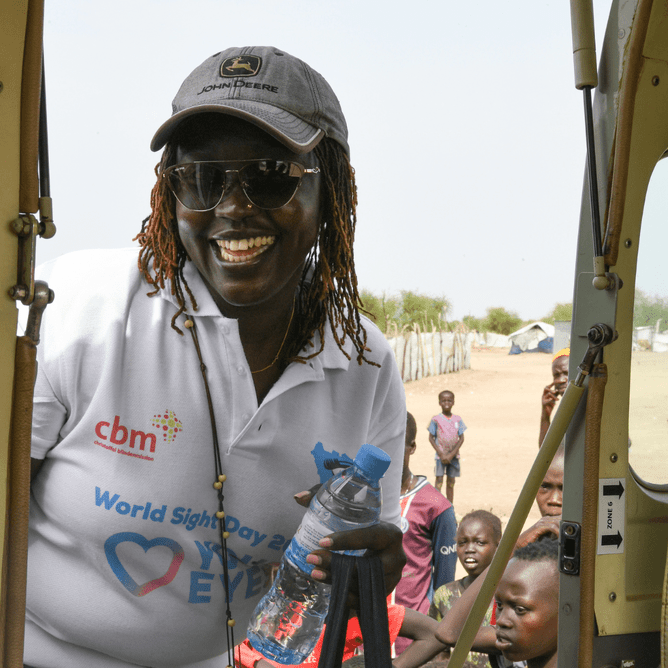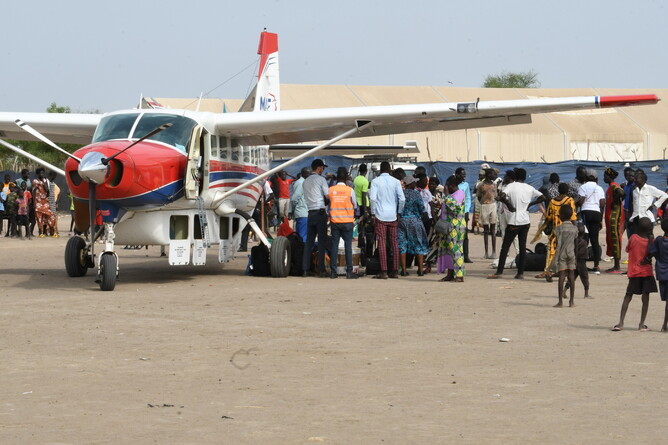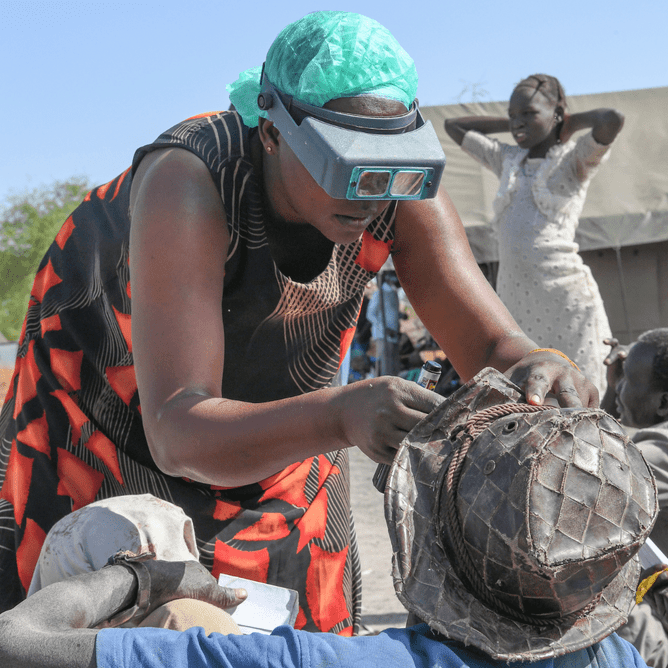Hundreds of people can see again after two MAF flights brought a team of specialists to a remote community in South Sudan.
‘We have done over a thousand surgeries. Some people have received surgeries on both eyes. Without MAF’s help we cannot reach these places – Yuai and Kapoeta North – working together means we can all do more,’ Dr Albino explains.
The small rural clinic is rundown and under-resourced. An hour and a half flight from Juba – or 2-3 days by road in the dry season, if it weren’t for the Carter Center team, the people would still be forgotten.
Medical teams flying with MAF is an effective way to meet enormous needs with only a handful of ophthalmologists, Stephen Oringa explains.
‘It is always exciting seeing people receive their sight. People are happy, dancing and telling testimonies about their life before surgery and what they are going to do now,’ he says.
The tent door opens and closes with a steady stream of patients led in and out.
‘Inside, is Dr Aja Paul, the first South Sudanese woman to qualify as an ophthalmologist. Dr Aja describes her work simply: ‘I bring smiles to people’s faces!’
The hardest things are the dust – there is a lot of dust. A surgeon in Europe would never be able to work like this, but we don’t say no because they need the service.
Hundreds of patients wouldn’t have the chance for surgery if we didn’t come,’ she says.
We work long days. It is tiring sometimes. But when you look at the people you have helped – you forget that you are tired. Your focus is always on the next patient. I am only here for a few days, I have much to do. You try and work to ease the burden’
787 people have laid on four operating tables to have a cloudy cataract replaced with a new synthetic lens or surgery to stop painfully in-turned eye lids and lashes scratching the cornea.
The burden eased, on this single outreach extends to 1257 surgeries. Amongst them Pajau Deng Kuon, who has cataracts. The 56-year-old grandmother is assisted by her nine-year-old granddaughter who was her eyes for the journey.
‘The aim is not to give them 20:20 vision but good enough sight to feed themselves, use the bathroom alone, and live independent lives as active members of their communities,’ Dr Aja explains.
‘Somebody who was in the dark – not seeing, just hearing your voice; suddenly they can see things six metres away. They will say I am happy! I can go to the toilet, I can see my food, I can change my dress, I can stay alone. I am happy!’
Younger patients present with a condition called trichiasis, the later stages of trachoma, caused by an easily treatable infection.
Deng Yak was so happy to regain his sight that he stayed to help the medical team after he recovered. Initially, the 21-year-old man from a cattle camp was reluctant to come for surgery for the condition that left him blind and in constant pain for several years. Now, the doctors are his heroes.
The following day, the wind whips across the airstrip – sending sand in vertical sheets across a few brave souls. Outside the clinic patients shelter under tents of loose-fitting clothing and wait for the storm to pass.
At the airstrip, the weather has cleared. MAF pilot Matt Marples secures the precious microscope used for the surgeries inside his plane while his colleague Reuben Vermeulen identifies his weary passengers and seats them on board. As the two MAF planes take off and Yuai disappears beneath, the team finally get the chance to see the bigger picture 1257 surgeries – 787 people, now have the ability to see.
STORY & PHOTOS / JENNY DAVIES


